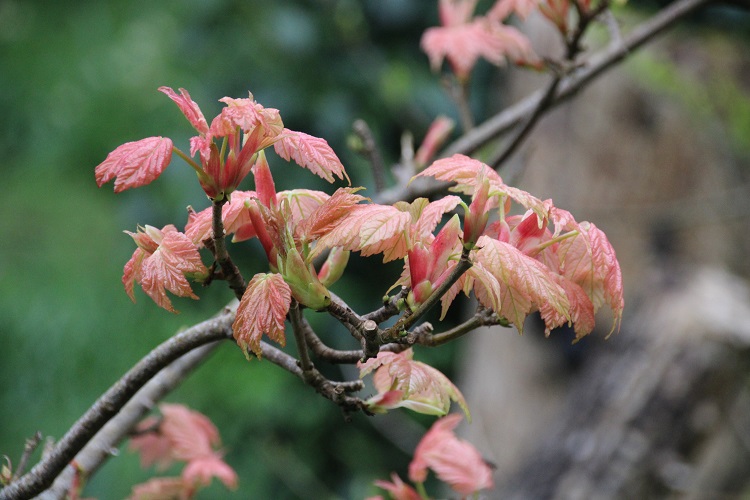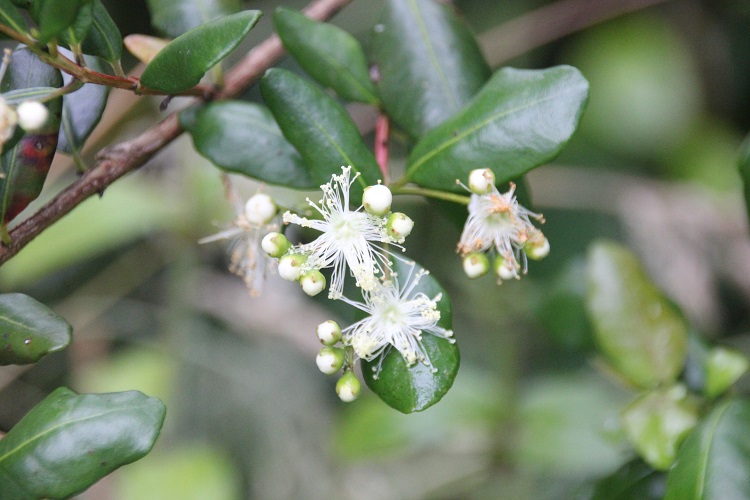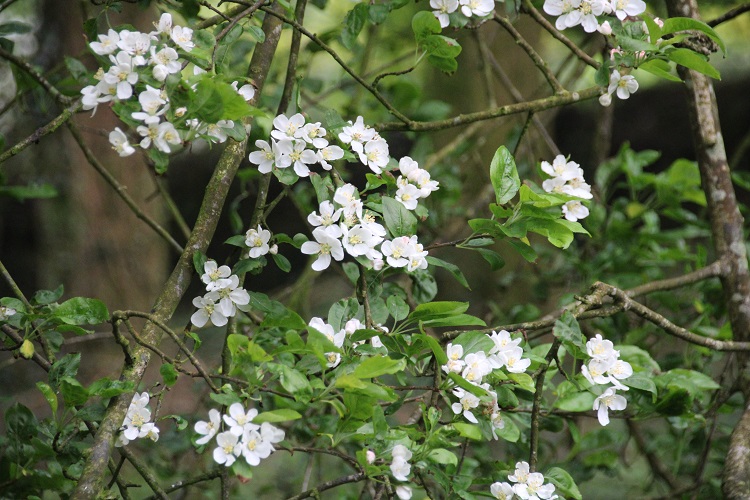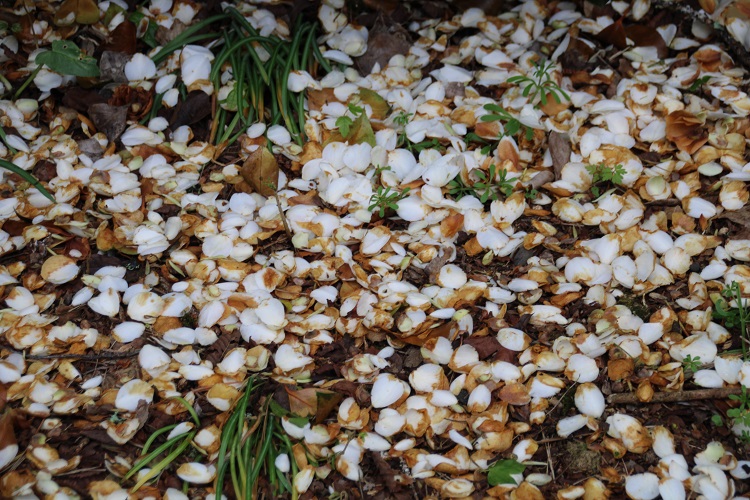JEARRARD'S HERBAL
Thats enough introduction - on with the plants!
To navigate this site use the links above or the detailed links at the bottom of this page.
... out in the garden.

14th December 2025
Agapetes 'Ludgvan Cross' .
The rain of last week finally gave way to some brighter weather. Some unfamiliar sunshine added confusion to a garden scene that was already chaotic.
Winter is hanging from every bare bough but there are places where even the grip of winter is becoming uncertain. The brief spell of cold nights has
filled the camellias with enthusiasm and after a week without any snowdrops outside, the next wave has started. 'Bess' and 'J. Haydn'
are putting their heads up.
I would gladly rush into the arms of spring at this stage and cheerfully disregard the bright lights of Christmas but the garden moves slowly at this time of the year.
Spring is building in the undergrowth but the garden has yet to relinquish autumn.
Agapetes 'Ludgvan Cross' was not well suited to the Hedychium house. When I planted it there I was convinced that it would be the perfect location after years of moving it around and watching it struggle.
I was so convinced that I had found the perfect location that it took me many years to recognise that the plant was slowly fading away. In the summer I finally dug it up and repotted it in the greenhouse.
It has responded with good cheer. I will think quite carefully before I try it out again.

14th December 2025
Hydrangea x versicolor .
Hydrangea x versicolor has been growing in the garden for a long time and I have been quietly avoiding it. The plant arrived here as Dichroa versicolor
but the names of this group have been in a confused state recently - the latest update to Trees and Shrubs online has provided some badly needed clarity.
The new name is Hydrangea x versicolor and it comes with a reputation for tenderness. While it has not been the toughest of the hydrangeas here, it has been in the garden since 2014.
The Beast from the East in 2018 cut it almost to the ground but it bounced back rapidly. A plant lower in the garden was killed outright, but it was really just a tub of rooted cuttings
that I had planted out in the autumn. I'm not sure that they had rooted into the soil, they certainly weren't established.
Over the years it has become a favourite with clusters of blue flowers produced throughout summer and into the winter as far as frost allows. This year it is hanging on well
and it looks as though it might make it into the new year.

14th December 2025
Vallea stipularis .
There are a few shrubs in the garden that flower with gusto in the summer and then produce an odd flower or two for the rest of the year, to defy expectation.
Crinodendron hookerianum is one of the best. In a normal year (ie. no silly extremes) it will often have an odd scarlet lantern concealed about its
burgeoning body to delight the curious. The pink form seems even more eccentric, producing a sprinkling of flowers when they seem least likely.
Vallea stipularis is a relative of Crinodendron. It doesn't have the same satisfying evergreen bulk, preferring to sprawl about the place
like an overly tall model in a deck chair, but it sputters pinkly through the autumn.
I have it planted in deep shade which hasn't helped the habit. It wasn't as shaded when I planted it but things have grown up around it. It doesn't seem to mind
and it is well protected from icy winds which can burn off the new growth.

14th December 2025
Veronica macrocarpa ssp. latisepala
The curious blurring of autumn and spring has dominated the garden this week. I set out with a sprayer to clear beds of weeds while the place was dormant
and discovered that things weren't as dormant as expected. I hope to get December free to weed through the garden but it isn't going to happen this year.
Already in the hellebore border, the first flower buds are showing. In the new herbaceous border the young shoots of Tulipa sylvestris have emerged
and in the middle of the border there is a shoot sticking up like a rocket. I'm not sure what it is but I will probably remember as it develops. I'm wondering about
Fritillaria imperialis, is that up yet?
Closer to the house, Veronica macrocarpa latisepala is in flower. I am told that it is quite tender but the white form (V. m. macrocarpa)
sailed through the Beast from the East as a youngster and neither of them has flinched in a winter since. The flowers come just when the garden is looking darkest
and will continue until spring has exhausted itself.
Meantime, more rain is promised.
To find particular groups of plants I grow, click on the genus name in the table above. Click on the "Index" box at the top of the page for the full list.
I have a lot of good intentions when it comes to updating this site, and I try to keep a note
about what is going on, if you are interested.
If you want to contact me, the address is incompetentjohnMONKEYjohnjearrard.co.uk
When typing the address in, please replace MONKEY with the more traditional @ symbol! I apologise for the tiresome performance involved, but I am getting too much
spam from automated systems as a result of having an address on the front page.
Perhaps my MONKEY will fool them.




